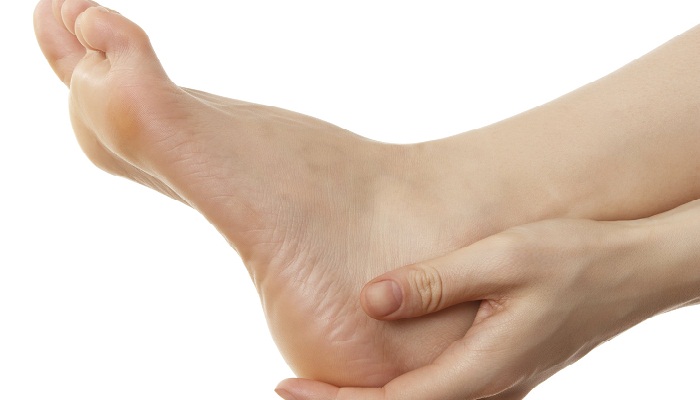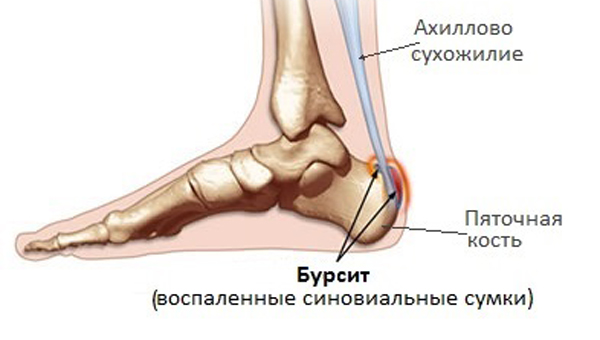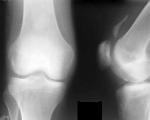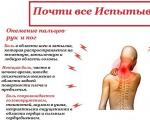Why does a person have pain in the tendon over the heel
Any movement of the foot, including flexion of the ankle joint, is provided by the work of the calcaneal tendon. Many of us know it from the ancient Greek myth of Achilles, who died from an arrow fired at the heel. Such a legend appeared far from accidental, because being the strongest in the body, the Achilles tendon is also the most injured. If a person has pain in the tendon above the heel, this may indicate inflammation or mechanical damage. All pathologies in this area must be detected in a timely manner, since inflammatory processes can move to neighboring tissues and significantly limit the mobility of the leg.
Causes of pain in the tendon over the heel
The Achilles tendon is located in the back of the lower leg and is attached to the tubercle of the calcaneus. Its dimensions may vary from person to person, but on average they range from 13 to 17 cm. Due to the fusion with the soleus and gastrocnemius muscles, this organ is highly durable and able to withstand stress, which is equivalent to a weight of 350 kg.
Pain in the tendon above the heel most often worries people who play sports or activities associated with stress on the feet - dancers, climbers. Often the problem appears in women who constantly wear high-heeled shoes. There are not so many reasons leading to pain syndrome, and their diagnosis does not cause much difficulty.
The most common pathologies and phenomena are called:
- tendinitis;
- tendovaginitis;
- Achilles bursitis;
- injuries, including calcaneal tendon rupture.
A common problem associated with pain over the heel is considered to be a disease such as tendonitis. Its essence lies in inflammation of the tendon as a result of infections, injuries, rheumatic diseases, pathologies of the immune system or degenerative processes in the joints. Symptoms of the disease are invariably accompanied by soreness in the affected area, as well as a number of additional signs:
- joint stiffness;
- swelling in the affected area;
- skin redness;
- sometimes protruding nodes that surround the joint in the heel area.
Read also: Why legs ache at night - reasons for what to do
At the same time, a person may complain of pain in the ankle and throughout the leg below the knee, which increases significantly with movement.
If pain bothers you for a long time (several months or more), then with a high probability a person has developed tendinosis. This disease is often considered a synonym for tendinitis, but its main difference lies in the appearance of dystrophic changes in the tendon and connective tissue.
tendovaginitis
With tendovaginitis, the condition when it hurts over the back of the heel is caused by inflammation not of the Achilles tendon itself, but of the surrounding synovial sheath. The disease can be acute or chronic, while the clinical picture largely depends on the form of the disease.

So, with acute tendovagititis, a swelling appears at the site of the lesion, which gradually spreads to the lower leg. Simultaneously with edema, a person is concerned about limited mobility and pain, which becomes more intense when walking.
Achilles bursitis
Achilles bursitis is characterized by inflammation of the synovial bursa that surrounds the Achilles tendon. Pathology not only worsens the physical condition of a person, but also significantly spoils the appearance of the heel region. It swells, becomes red, increases in size. Most often, with this disease, patients complain of:
- pain in the tendon above the heel;
- limited movement of the ankle;
- , which intensifies in the morning or when you try to stand on your toes.

Calcaneal tendon injuries
With prolonged physical exertion or sudden movements of the foot, the Achilles tendon can be damaged. A milder injury is considered to be a sprain that occurs while running, playing football, basketball, and other active activities. It is much more serious if a tendon rupture has occurred. Such damage causes severe pain and requires long-term treatment.
It is possible to understand that a rupture has occurred by an unexpected and acute pain syndrome at a height of about 3-5 cm above the sole, after which edema appears at the site of injury.
If the pain arose higher, then the problem with a high probability lies no longer in the tendon, but in the calf muscle.




